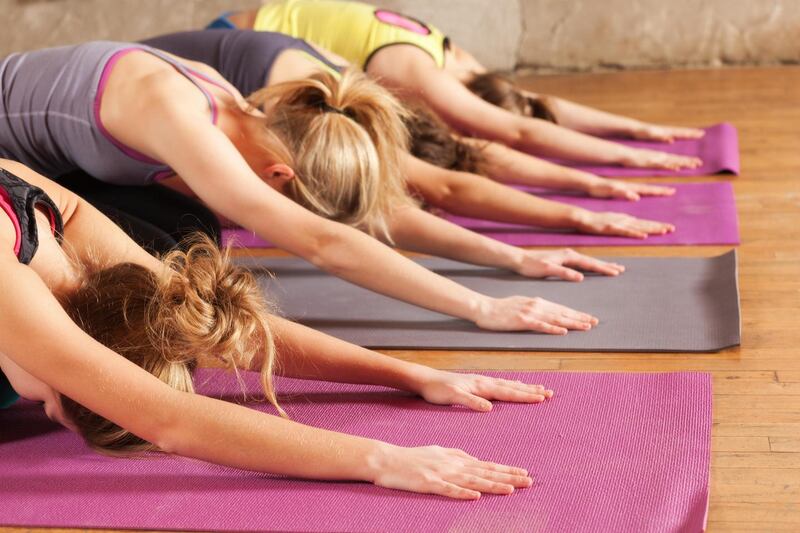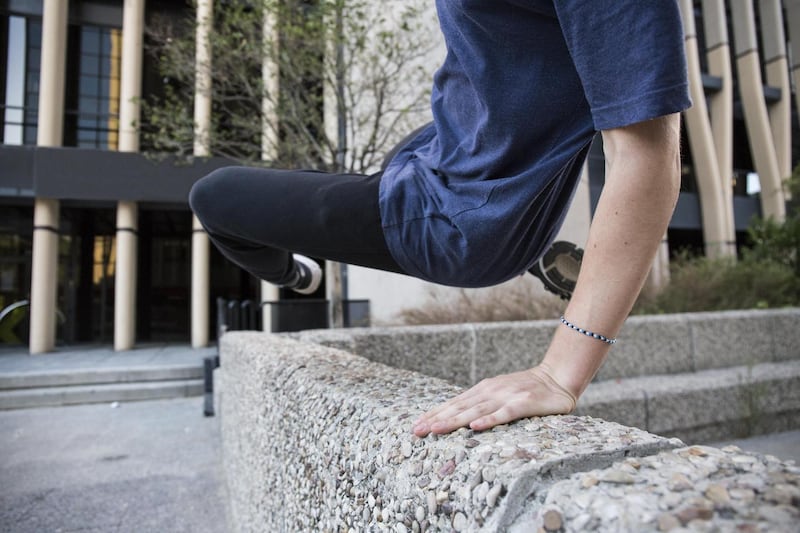When Prof Niall Moyna of Dublin City University began examining the health condition of inactive teenagers in recent years, he got a shock. The cardiovascular health of some inactive 15-year-olds was comparable to that of 55 to 60-year-olds, with significantly more plaque on the walls of their arteries.
“Parents don’t see the clinical manifestations of this, but the ultrasound imaging shows it up very clearly,” he says. “These are the arteries supplying the heart and the brain. It’s the build-up of this fibro-fatty plaque that can cause heart attacks or stroke.
“So, many of these teens are well on the way to developing type-2 diabetes and are at increased risk of developing vascular dementia. All at the age of 15! This should be a wake-up call for parents.”
Screen time is taking unstructured physical activity out of kids' lives. They are called digital natives for a reason – it's where they're spending most of their time
For years he has been organising the Irish Life Health annual fitness challenge, where thousands of school students undergo a "bleep" test to measure their fitness levels.
It’s a multistage fitness test where pupils do 20-metre shuttle runs in time with bleeps until the sounds get too quick to complete the run.
The findings back up recent studies which indicate that the vast majority of teens are badly out of shape and not getting anywhere near the level of exercise they need.
Just 12 per cent of teenagers in secondary schools are meeting Department of Health recommendations of at least 60 minutes daily of "moderate to vigorous physical activity", according to the latest study.
In addition, teenagers are getting less active the older they get. The latest fitness challenge results show fitness levels decline significantly from the age of 15 onwards, especially among girls. This reflects a trend towards neglecting fitness in the run-up to the Leaving Cert and a growing obsession with securing enough CAO points.
While there are some indicators that today’s teenagers are growing more body and health conscious, Prof Moyna feels the problem is growing worse, not better.
“Screen time, I think, is to blame. It’s taking unstructured physical activity out of their lives. They are on their phones. Kids today are called digital natives for a reason – it’s where they’re spending most of their time.”
A global problem
Ireland is not alone – a growing body of research indicates that is a global problem across the developed world.
Recent studies, conducted among more than half a million children in Denmark who were followed into adulthood, linked a high body mass index in children to an increased risk of developing colon cancer and suffering an early stroke as adults.
Experts say the findings underscore the importance of preventing and reversing undue weight gain in young children and teenagers.
Obesity most often develops from ages five or six or during the teen years, according to the American Academy of Child and Adolescent Psychiatry.
The harmful effects of excess weight in childhood and adolescence don’t necessarily wait to show up later in life.
Dr Stephen Daniels, a paediatrician at the University of Colorado School of Medicine and the Children's Hospital in Denver, has found that problems in many organ systems were often apparent long before adulthood.
They include high blood pressure; high blood levels of heart-damaging triglycerides; nonalcoholic fatty liver disease; obstructive sleep apnoea; asthma; and excess stress on the musculoskeletal system resulting in knee and hip pain, and difficulty walking.
The problems of youthful obesity go beyond physical ones. Obese adolescents have higher rates of depression, which in itself may foster poor eating and exercise patterns that adds to their weight problem. This results in a poor quality of life that often persists into adulthood.

The PE challenge
Maria Lynch, a former Irish runner, is a teacher at a girls’ secondary school in Bray, Co Wicklow, and involved in PE activities.
She says there has been a noticeable deterioration in children’s physical condition over the years.
“PE is a real challenge,” says Lynch. “Things we took for granted, such as squatting or hinge movements which you develop from play, can be a real challenge,” she says.
“Society has changed. Kids aren’t playing out on the road any more. Parents are working and busier. If you want a child to be involved in after-school activity, they have to be driven there and back.”
She also sees how phones are displacing the kind of play or activity that once took place at break-time.
"We talk about the feelgood factor from exercise – now they get it from their phones," says Lynch. "It's frightening. During lunch break, you see students on their phones, on Snapchat or Instagram or playing games ... It's their way of socialising."
PE teachers agree that the pressure to secure CAO points is leading many to give up sports or any kind of activity in senior cycle.
Many say girls are also more likely to feel body conscious, especially those with weight issues, and feel uncomfortable togging out into sports gear.
That’s why some PE teachers are changing their approach to try to engage young people in new ways.
Aoife Lynskey, a PE teacher at Gort Community School, has introduced a range of activities that appeal to girls especially, such as yoga, Pilates, zumba and rebounding (small trampolines).
“You have to adjust to what they are interested in and be a bit creative,” says Lynskey.
“If I say to the boys that we’re doing a dance class, they might run a mile. But I say we’re doing a haka, like the All-Blacks, they they’re suddenly interested.”
Lynch said her schools has introduced dance classes for the girls, which the students run themselves under supervision.
In addition, there are free weights and gym sessions before school from 7.45am.
“The girls [who take part] talk about how they are calmer, feel more relaxed, sleep better. There are also the physical benefits they see in their arms and bodies, so there’s a vanity side. But they love seeing the gain they get and progress they’re making.”

Parents’ role
Pat Tuohy, a PE teacher at Summerhill College in Sligo, says that by setting up clubs in areas such as kayaking and surfing they are reaching out to pupils who might not otherwise be engaged.
However, he says the notion that schools hold all the answers simply isn’t the case. “A child is in school for a third of the year, so what about the other two-thirds? Much of the responsibility lies with the parent.”
When organising activities with younger children, Tuohy is struck by the number of parents who see physical activity as something that takes place only within the confines of a structured group.
“Parents would just drop them off and leave them with me … Yet, we were just doing hopping, skipping and jumping. You don’t need any skills to do that. All you need is a creative mind and a bit of craic,” he says.
“It doesn’t have to be an hour – just 10, 15 or 20 minutes. It might just be a walk and hanging out with them.”
Parents, he says, need to do much more to build activity into their children’s everyday lives.
“This is a generation that has grown up with technology. Their parents have handed it to them, but they haven’t handed their time… If I go for a walk in the park on a Saturday, I see more non-Irish families walking.
“It’s seldom I see Irish families. We’re great at dropping our kids to activities, but really they want to be hanging out with their parents.”
Prof Moyna, a former PE teacher himself, agrees that most parents have a remarkably laissez-faire approach to their children’s activity levels.
“I’d like to see parents asking their PE teacher about the health of their kids – instead of writing notes excusing them from taking part. They need to question themselves. When they write notes, they are refusing access to the best medicine we have on the planet.”
Many parents – and students – worry that sport or exercise will swallow up previous times for studying. However, Prof Prof Moyna says they are missing the point.
“All the research shows that kids who exercise have better attention spans and can store, retrieve and process information better than those who don’t.
“Parents need to understand that the brain is an organ that also needs exercise.”

A health epidemic
So how do we begin to tackle what some describe as a major public health epidemic?
The good news is that teenagers can make significant strides with relatively little effort.
The six-week programme that forms part of the Irish Life Health fitness challenge shows teens are able to boost their fitness by an average of 10-12 per cent.
“If that was the result of a clinical trial for a new drug, we would be jumping for joy,” says Prof Moyna.
Policy changes at school are also identified by many as a crucial in spreading awareness among children about their own health.
The introduction of PE as a Leaving Cert subject on the senior cycle this year is seen by many as an encouraging first step.
It will attract CAO points in the same way as any other subject and provide a greater incentive for students not to give up physical activity.
Educating parents is seen by most public health experts as the most important step. The vast majority of parents underestimate their overweight child
Public health experts argue that much more should be done, such as making PE mandatory for all years and introducing an engaging health-science curriculum which will make pupils more aware of the benefits of exercise.
Prof Moyna also feels much more structure is needed in schools to benchmark pupils’ fitness and to track it over time. “We’ve all these PE teachers in schools, with no national policy or health assessments. Yet, we have a test we can use that is the best surrogate for a person’s overall health.”
Educating parents, above all, is seen by most public health experts as the most important step. Research, for example, shows the vast majority of parents underestimate their overweight child.
Public health experts say it is vital parents ensure that kids eat the right amount of fruits and vegetables and fewer calorie-rich snacks. They also need to be tuned in to opportunities for physical activity and set hard-and-fast rules about time spent on screens or TV.
No excuses
The cost of not acting, say many, is too big to contemplate.
“Take type-2 diabetes, which is mostly a lifestyle disease. We spend close to €1.5 to €2 billion a year on a disease which we shouldn’t be spending in the first place,” says Prof Moyna. “Imagine if we put that into better PE facilities or equipment with smart sensors to track people’s health and make health science more exciting?”
He says even small changes in behaviour can have significant cost-savings into the future.
“ The most important activity we’ll ever do is walking. Even if we inculcate that in everyone, the health benefits would be incalculable. We don’t get tremendous variations in the weather. Maybe if we lived in Siberia or the desert. So, really, we have no excuses.”












